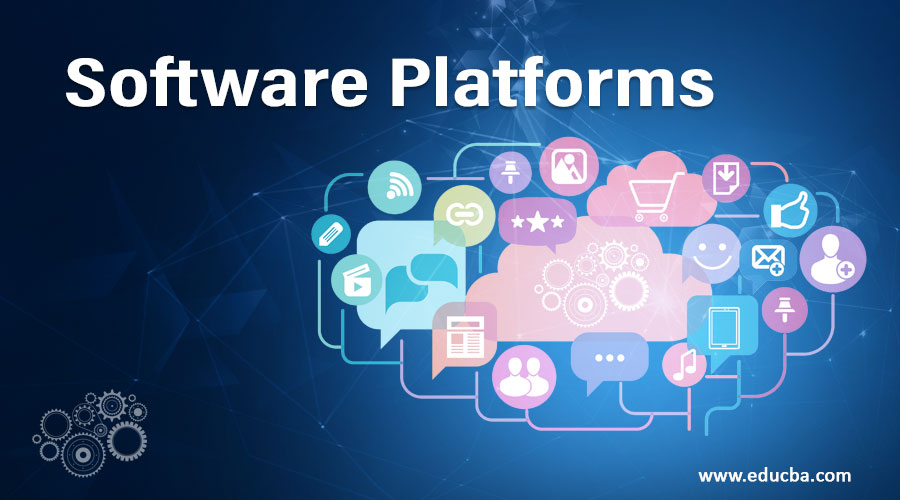Updated June 6, 2023
Introduction to Software Platforms
The following article provides an outline for Software Platforms. Building a successful platform will be more important than making the right trade-offs. To understand these compromises, you must know how you build a platform. We chose to help entrepreneurs on the platform to understand these trade-offs, find their role models, and learn from many other platforms. Not every platform is equivalent.
These sites include Uber, Google Search, Amazon Web Services, Twitter, Whatsapp, Waze, WeWork, Airbnb, Twilio, Amazon Marketplaces, Instagram, and Bitcoin. Simultaneously, these networks are very different in how they create network effects, interactions, accessibility rates, development mechanisms, promotions, pricing approaches, and monetization methods.
Types of Software Platforms
Given below are different types of software platforms:
1. Utility Platform
Zenefits, Kayak, and Google Search, are examples of Utility platforms. Platforms attract subscribers by offering a beneficial, usually free service. When many users use this available service, the network opens up to a second type of consumers, Google Search advertisers, Kayak airline companies, or Zenefits insurance companies.
The useful service itself has no network effect. Users attract companies, but companies do not necessarily attract users on the platform. We are looking for information on Google Search, not advertisements. Deploying utility platforms is quite simple — try to ensure you have a useful service that generates frequent use and has insignificant marginal costs. After a critical mass of users has created an asset, open up your service for enterprises to monetize the network.
2. Technology Platform
Examples of technology platforms are Microsoft Azure, Twilio, and AWS (Amazon Web Services). Technology platforms provide components or services reused in a wide range of products. Via illicit innovation, third-party developers integrate these construction blocks and services into their products to increase the platform’s popularity. Remember that development systems are not double-sided.
They are not supposed to connect participants to the platform. Software companies often make money by offering developers their services, and they are usually invisible to end-users. For instance, although Netflix runs its video streaming services on its Amazon Web Services (AWS) platform, end users communicate with Netflix only. AWS is the tube for the operation. This makes it much easier to introduce development projects since chicken or egg issues are not solved in multiple or peer-to-peer networks.
3. Computing Platform
Computing platforms allow interactions between platform users and third-party developers, in sharp contrast to technology platforms. The developer “owns” the user on technology platforms. The framework “owns” the consumer in computer applications. Framework computers such as Google Android or Apple iOS and Microsoft Windows make the platform more useful for consumers, widening it with new usage cases.
The link between users and developers is established in modern computer platforms via an App Store / Market, streamlining app discovery, advice, activation, and monetization. Computing networks develop strong bi-directional network effects when a critical mass is reached. Developers create software, and applications to attract users, so that is why developers attract users, etc. The computer framework needs to be successfully introduced to solve the challenges.
4. Data Harvesting Platform
InsideSales.com, Wave, and OPensignal are the best example of the Data harvesting platform. Such systems provide users with a useful service and produce data via the platform service. The arrangement to supply data is a requirement for the network to join. All platform users collect and return the data to the service, making it better for users. In such networks, the impact is based on data instead of users.
Usage produces data, making the platform usable for users, attracting more users, producing more data, etc. The service value proposition moved from free maps to traffic predictions based on data obtained from all app users when enough users were present on the network.
5. Content Distribution Platform
Content distribution platforms include Outbrain, Google AdSense, Millennium Media, and Smaato. These networks connect consumer touchpoint owners to content owners who wish to provide users with content. The more touchpoints on the website, the more attractive it is for content owners. The more information on the platform is made available to the owners of touchpoints, the more appealing the product becomes.
6. On-demand Service Platform
Munchery, uber, and Heal are examples of On-demand Service platforms. This platform aims to provide end-to-end services delivered by a network of independent service providers. The trade varies significantly from that of the markets. Service Platforms on-demand combine discovery, ordering, payment, completion, validation, and confirmation of the one-roof service.
Recommended Articles
This has been a guide to Software Platforms. Here we discuss the introduction and different types of software platforms, respectively. You may also have a look at the following articles to learn more –



